IF anyone should know about business, it is former corporate lawyer turned egg farmer Rob Peffer.
The move from law to farming seems extraordinary until Rob’s family history emerges. While he was raised the son of an accountant in Brisbane, Rob’s grandparents ran a farm near Molong in the NSW Central Tablelands region, and Rob spent time there with his cousins as he grew up.
When Rob decided it was time for a change, he looked to farming and more specifically the family’s business. The Peffer Pastoral Co was started by his grandparents Ivo and Marie Peffer with a paltry six chickens. Today, the Peffer family runs 180,000 chickens along with wheat and sheep across 2,000 hectares over several properties around Molong.
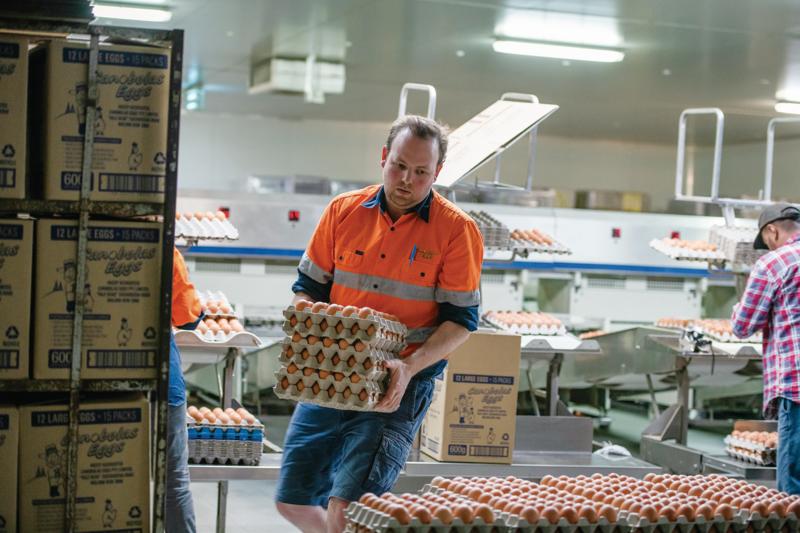 Rob Peffer helps out with the packing of the eggs. He returned to the farm after practicing law.
Rob Peffer helps out with the packing of the eggs. He returned to the farm after practicing law.
The egg business is known as
Canobolas Eggs, and Rob is now sales and distribution manager, while his uncle Colin Peffer is the general manager and his cousin Josh is the production manager.
Non-caged egg production key to success
Rob’s passion for eggs helped him win a Nuffield Scholarship in 2015, which saw him travelling to the United Kingdom, Europe, the United States, Canada and New Zealand looking at best practice in alternative, or non-caged, egg production. He applied for the scholarship in response to the state of flux and confusion in the egg industry at that time. It’s a situation, he says, that still exists.
“As egg producers, we are told consumers appear to want barn-laid or free-range eggs,” Rob says.
“The retailers tell us that they are having problems selling caged eggs. We need to accept we are working in that environment and find a way to respond.”
“The scholarship also allowed me to look at what we can do better in alternative egg production systems so that the numbers stack up.”
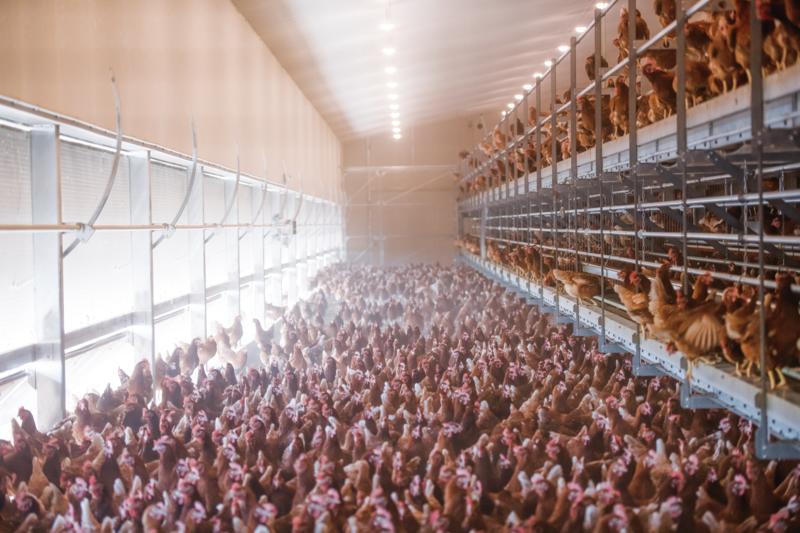 The chickens in the free-range shed, which is designed to have a large floor area for scratching and dust bathing.
The chickens in the free-range shed, which is designed to have a large floor area for scratching and dust bathing.
Rob’s scholarship research, coupled with discussions with the retailers he supplies, has led to a shift in the breakup of the business’s egg production. About 40% of Canobolas Eggs are now from caged chickens, while the remainder are barn-laid or from the company’s new free-range operation 2.5km up the road from the original farm.
Rob’s grandfather Ivo, who died in 2016, could see the irony in the way the business had reverted to free-range – which is where it had started in 1955. “My grandfather didn’t necessarily want to change but he wanted to be supportive of the next generations,” Rob says.
Interested in attending an industry poultry meat forum? Come listen to speakers, ask questions and have your say on critical issues affecting the industry.
Register interest HERE
- Mittagong - 6 September 2019
- Beresfield - 20 September 2019
Egg industry returning to pre-World War II days
“He said he had seen the industry come full circle, and that it was not all for the good. Cages were introduced to alleviate health problems that come from the natural environment, like predators, parasites and disease.”
“There are very few agricultural industries that have returned to how they used to produce pre-World War II but that seems to be the way the egg industry is going.”
Rob says there was a need to respond to consumer demands, but believes some retailers have an incentive to promote the alternative systems due to higher margins rather than animal welfare concerns. “A 40% margin on a $3 dozen is a lot less than a 40% margin on a $5-$6 dozen,” he says.
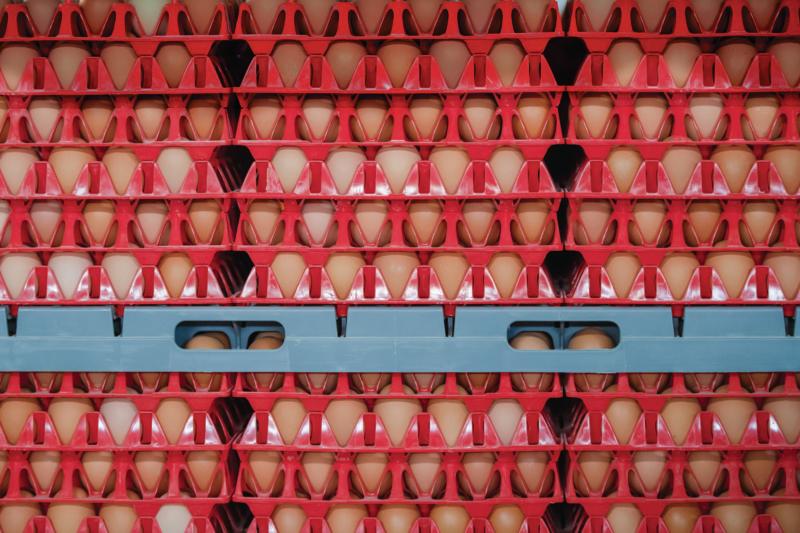 Canobolas Eggs has responded to retailers requesting free-range, though Rob believes this is driven by margin, not by animal welfare.
Canobolas Eggs has responded to retailers requesting free-range, though Rob believes this is driven by margin, not by animal welfare.
Rob also believes the free-range and barn-laid eggs are not sold at enough of a premium over caged eggs, despite the greater production costs. Nevertheless, Canobolas Eggs has responded to what the retail buyers and other customers are telling them and has worked within a three-pronged production system. This requires three different management strategies for the hens, which are a mix of Hyline Brown and Lohmann Brown.
RELATED:
The caged-egg vs free-range debate
The free-range chickens are given the chance to wander around outdoors during the day and are housed in barns at night. The cage-free chickens are allowed to move around in climate-controlled barns, which give them more space than caged hens while protecting them from outside diseases and predators. Meanwhile, Rob says, the caged chickens live in a controlled environment where feed, water and temperature are all chosen to maximise their comfort.
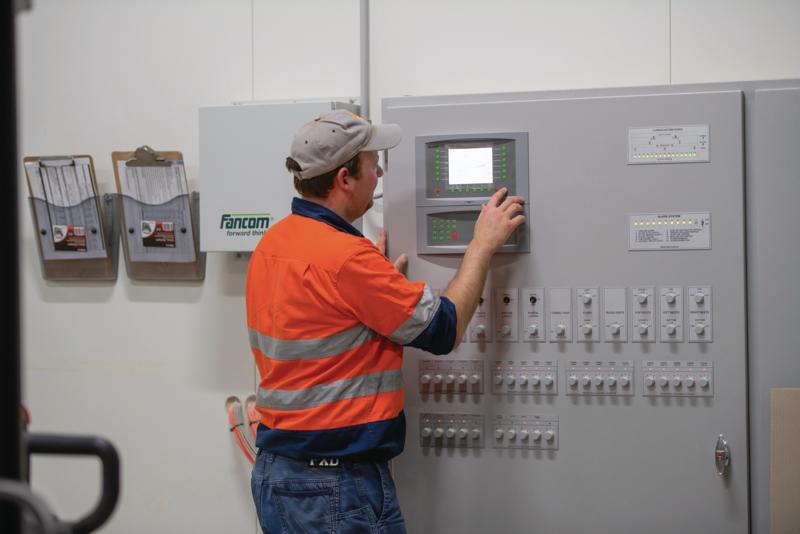 Rob checks the high-tech environmental control system in the free-range shed.
Rob checks the high-tech environmental control system in the free-range shed.
Ron says their caged chickens produce about 330 eggs a year, while their free-range chickens are on track to produce less. Mortalities are typically three-to-five times as high in the free-range raising system, as birds are exposed to predators as well as the weather. Health issues can also cause problems, as can bullying. Additionally, the free-range birds eat 10-15% more than their caged counterparts, which consume about 110 grams of feed each day.
The Peffers supply some of those feed needs by growing their own wheat, which is mixed with barley and sorghum to produce a ration. In tough seasons like this one their feed costs escalate because they have to buy in more grain, which further increases the difference in production costs between caged and non-caged eggs.It’s these kinds of figures that need to be crunched as Rob and his family work within the brave new world of egg production.
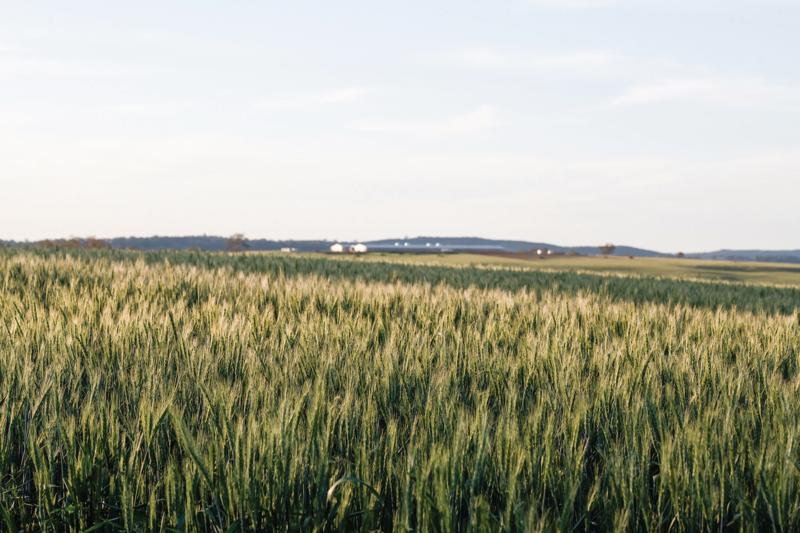 The Peffer’s wheat crop.
The Peffer’s wheat crop.
While Rob acknowledges that around 30% of consumers are prepared to pay more for non-caged eggs, there is also a slice of the market that wants to buy eggs at the cheapest price possible, and the most economic way to produce them is in cages.
RELATED:
Investigating the Red Lea Chickens collapse
Rob and his family sell all three types of eggs under the Canobolas Eggs brand, which was born in 1990 in response to the deregulation of the NSW egg industry. At the time, a couple of the family members came up with a colourful label complete with a cartoon character christened “Barny”, with the goal of attracting attention from other egg cartons on the shelves. “For us, having a little character on the cartons with a chook epitomised our personal approach to egg production,” Rob says.
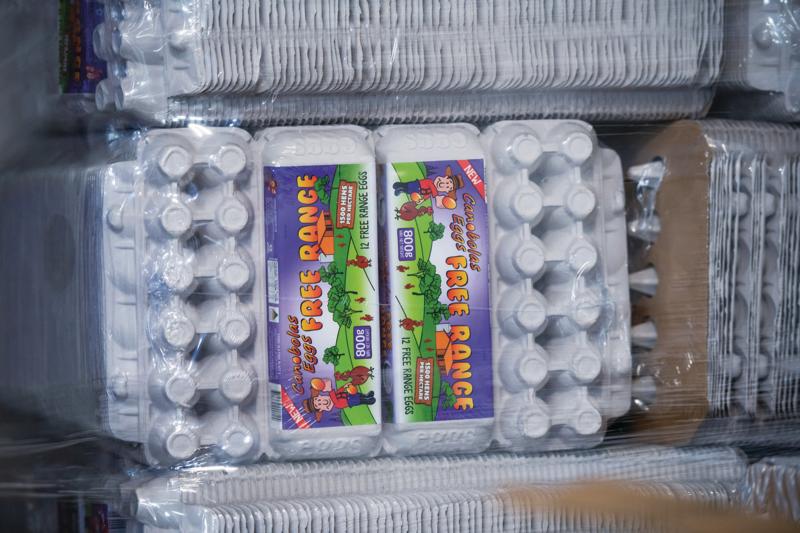 Canobolas branded eggs.
Canobolas branded eggs.
Today, the company delivers to 50-60 stores each week, with a fleet of four trucks making deliveries either once or twice a week depending on turnover. The trucks, which can carry 10 pallets, make three trips a week to the company’s major sales centre, Dubbo. The eggs are supplied to about 25 Woolworths, 10 Coles and 30 independent supermarkets within a 150km range of Molong. A number of restaurants, bakeries and cafes are also supplied.
“Our model is to do direct deliveries to the stores, so that limits us geographically,” Rob says. “We want our brand to have a strong regional presence. We would rather have a range of products in 50-60 stores than one product in 800 stores.”
Customer loyalty confirms quality eggs
Despite the challenges of getting a brand into major retailers, Rob says the supermarket buyers were responding to good feedback from the customers. “I was told by one retail buyer that our eggs had some of the highest loyalty of any egg brand in the country,” he says, adding that customers even ring him direct.
RELATED ARTICLES ON FAMILY BUSINESSES:
-
Oyster growers thrive
-
Australia's oldest family-run turkey farm
-
Beekeepers nurture thriving family business
“I had a lady from Canberra who rang me to tell me they were the best tasting eggs she had ever eaten. It was five minutes on the phone to someone who made us feel like what we are doing is actually worth it.”
Then there are the shows. Canobolas Eggs has won 10 major prizes for quality at the Royal Easter Show in Sydney since 2000 and Rob says it’s a part of the year he really enjoys as he takes his precious cargo down to compete against the best from across the state.
The company is one of a number of family-run success stories in the egg industry and Rob says it is no surprise corporate farming has largely shied away from egg production. Most of these family-run egg operations range from a niche, with a few hundred chickens, to very large with hundreds of thousands of hens. Canobolas Eggs sits somewhere in the middle.
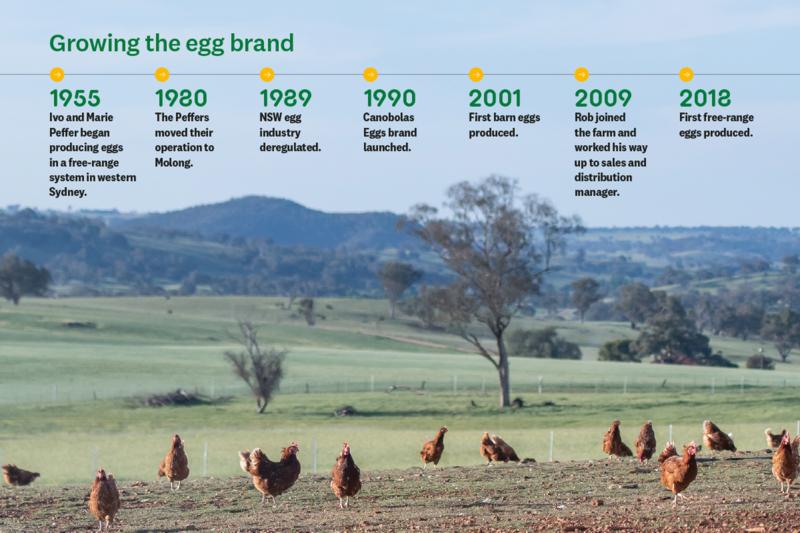
“If the alarm goes at 2am and it’s your business, you get up and check what is wrong and families are the ones who get up and do these things,” Rob says.
That level of care extends right from the way the chicks are grown out to the way the hens are monitored to the personal delivery of the eggs to retailers on the company’s own trucks. “We deliver the eggs ourselves because it is one less set of hands the eggs go through,” Rob says. “There are less breakages because the eggs are delivered by people who care and have a lot of practice and a lot of pride in what they do, and ultimately, it gets better results.”